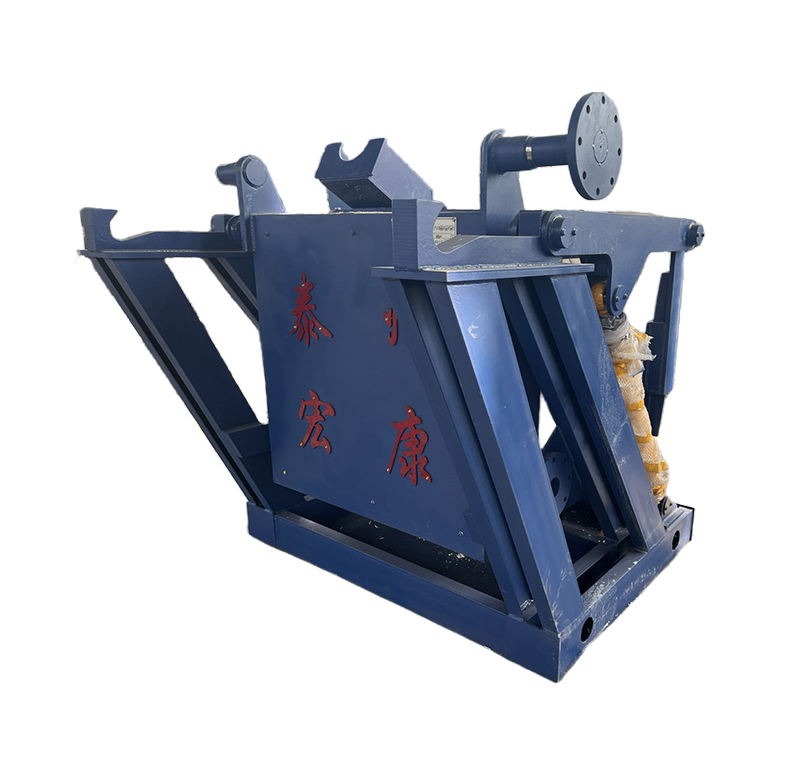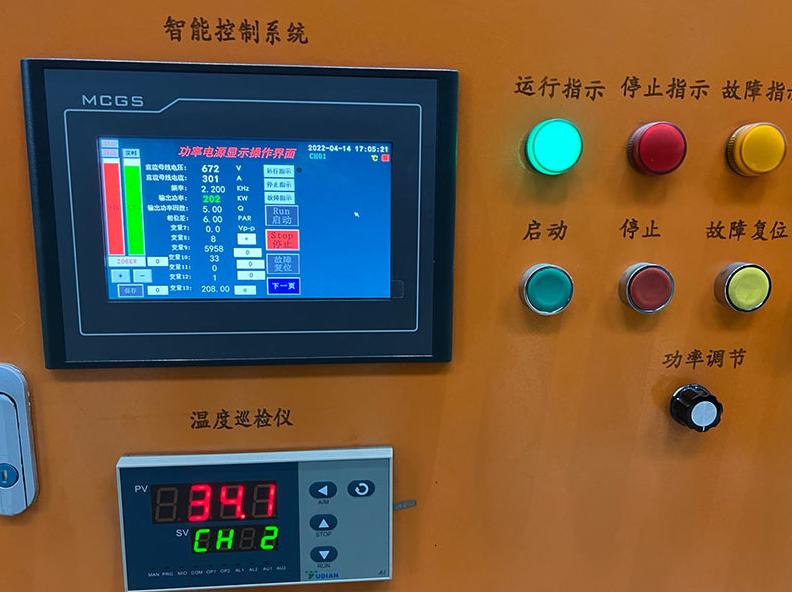Can Induction Furnace Steel Melting Adapt to Various Types and Industry Needs?
Induction furnace steel melting stands as a cornerstone process in various industries, from automotive to construction. At its heart lies induction furnace technology, a method revolutionizing steel melting. Traditional methods, while effective, face challenges such as energy consumption and environmental impact. Enter induction furnaces, offering a more efficient, precise, and environmentally friendly solution.
The Technology Behind Induction Furnaces
Induction furnaces utilize electromagnetic induction to generate heat directly within the metal. A coil surrounds the crucible, inducing eddy currents within the steel, rapidly heating it. This process allows for precise temperature control, essential for achieving desired steel properties.
- Induction Coil Design:The design and material of the induction coil significantly impact furnace performance. Factors such as coil shape, size, and cooling mechanism influence energy efficiency and melting speed.
- Crucible Materials and Design:The choice of crucible material and design affects heat transfer efficiency and durability. Advanced materials and innovative designs enhance furnace lifespan and performance.
- Control Systems:Advanced control systems regulate power output, ensuring optimal melting conditions. Real-time monitoring and feedback mechanisms enable precise temperature control and process optimization.
Importance of Steel Melting in Various Industries
Steel melting serves as the backbone of numerous industries, including automotive, aerospace, and infrastructure. From manufacturing components to constructing buildings, steel’s versatility and strength make it indispensable.
- Automotive Industry:Steel is vital for manufacturing vehicle components, providing strength and safety. Induction furnace steel melting ensures high-quality steel for automotive applications, meeting stringent industry standards.
- Construction Sector: Steel structures form the backbone of modern infrastructure projects. Induction furnace technology produces steel with precise properties, ensuring structural integrity and longevity.
- Industrial Machinery:Steel plays a crucial role in manufacturing industrial machinery and equipment. Induction furnace steel melting facilitates the production of specialized steel alloys tailored to specific industrial applications.
Challenges in Traditional Steel Melting Methods
Traditional steel melting methods, such as blast furnaces and electric arc furnaces, face several challenges, including energy consumption, environmental impact, and limited flexibility.
- Energy Consumption:Traditional methods often consume large amounts of energy, contributing to high operating costs and environmental pollution.
- Environmental Impact:Emissions from traditional steel melting processes contribute to air and water pollution, posing environmental and health risks.
- Limited Flexibility:Traditional methods may have limitations in melting certain steel grades or producing specialized alloys, hindering flexibility and adaptability.
Energy Efficiency in Induction Furnace Steel Melting
Energy efficiency is paramount in steel melting operations, impacting both operational costs and environmental sustainability. Furnace Steel Melting offers significant advantages in energy efficiency compared to traditional methods.
- Induction Heating Efficiency: Induction furnaces directly heat the metal, minimizing energy loss and improving efficiency compared to indirect heating methods.
- Optimized Power Usage:Advanced control systems in induction furnaces optimize power usage, reducing energy consumption while maintaining melting efficiency.
- Induction Coil Design:Efficient coil design minimizes energy loss and maximizes heat transfer, further enhancing energy efficiency in induction furnace steel melting.
Strategies and Technologies for Optimizing Energy Usage
Several strategies and technologies can further optimize energy usage in induction furnace steel melting, reducing operational costs and environmental impact.
- Power Management Systems:Implementing advanced power management systems enables precise control over power usage, minimizing energy wastage.
- Heat Recovery Systems:Heat recovery systems capture and reuse waste heat generated during the melting process, improving overall energy efficiency.
- Process Optimization:Continuous process optimization through data analytics and real-time monitoring enhances energy efficiency and productivity.
Cost-Effectiveness and Productivity
Cost-effectiveness and productivity are critical considerations for steel melting operations. Induction furnace technology offers several advantages in terms of cost-effectiveness and productivity compared to traditional methods.
- Operating Cost Comparison:Induction furnaces typically have lower operating costs compared to traditional methods due to higher energy efficiency and reduced maintenance requirements.
- Enhanced Throughput: Induction furnaces allow for faster heating and melting rates, increasing throughput and overall productivity.
- Quality Control:Precise temperature control and uniform heating in induction furnaces result in higher-quality steel, reducing rework and scrap costs.
Addressing the Environmental Impact of Steel Melting Processes
Steel melting processes, traditionally, have been associated with significant environmental impacts, including air and water pollution, greenhouse gas emissions, and energy consumption. However, the adoption of induction furnace technology has marked a significant step towards mitigating these concerns. Induction furnaces operate with greater energy efficiency and produce fewer emissions compared to conventional methods, thus reducing their environmental footprint.
- Reduced Emissions:Furnace Steel Melting utilizes clean energy sources and produce minimal emissions during operation. Unlike traditional furnaces, which often rely on fossil fuels or coal, induction furnaces use electricity, resulting in lower carbon emissions and improved air quality.
- Energy Efficiency:The direct heating mechanism of induction furnaces minimizes energy wastage, enhancing overall energy efficiency. By reducing energy consumption, induction furnaces help conserve natural resources and mitigate the environmental impact associated with energy production.
- Resource Conservation:Induction furnace technology enables the use of scrap steel as a raw material, promoting resource conservation and reducing the demand for virgin materials. This not only minimizes waste but also lowers the environmental impact of mining and extraction processes.
How Induction Furnaces Contribute to Sustainability Goals
In addition to mitigating environmental impact, induction furnaces play a vital role in advancing sustainability goals across various industries. Their energy-efficient operation, coupled with the ability to utilize recycled materials, aligns with global efforts to reduce carbon emissions and promote circular economy principles.
- Carbon Footprint Reduction:By minimizing energy consumption and emissions, induction furnaces contribute to reducing the carbon footprint of steel manufacturing operations. This aligns with international initiatives aimed at mitigating climate change and achieving carbon neutrality targets.
- Circular Economy Principles:Induction furnaces facilitate the recycling and reuse of steel scrap, supporting the transition towards a circular economy. By integrating recycled materials into the production process, they help conserve resources and minimize waste generation.
- Sustainable Supply Chains:Manufacturers like Taizhou Hongkang Electric Co., Ltd. prioritize sustainability throughout the supply chain, from sourcing raw materials to delivering energy-efficient induction furnace solutions. This commitment to sustainability enhances the overall environmental performance of steel melting operations.
Innovations and Best Practices for Minimizing Environmental Footprint
Continuous innovation and the adoption of best practices are essential for further minimizing the environmental footprint of steel melting operations. Several innovations and strategies focus on enhancing environmental sustainability while maintaining process efficiency and productivity.
- Advanced Emission Control Technologies:Implementing advanced emission control technologies, such as bag filters and scrubbers, helps capture and mitigate pollutants released during steel melting processes. These technologies ensure compliance with environmental regulations and reduce the impact on surrounding ecosystems.
- Renewable Energy Integration: Leveraging renewable energy sources, such as solar or wind power, for electricity generation further reduces the environmental impact of induction furnace operations. By transitioning to clean energy sources, manufacturers can significantly decrease their carbon emissions and reliance on fossil fuels.
- Closed-Loop Water Systems: Adopting closed-loop water systems minimizes water consumption and prevents contamination of natural water bodies. Recirculating water used for cooling and quenching processes reduces freshwater intake and wastewater discharge, conserving this vital resource.
Importance of Quality Control and Consistency
Quality control is paramount in steel melting operations to ensure product integrity and meet industry standards. Furnace Steel Melting offers several advantages in terms of quality control and consistency compared to traditional methods, enhancing the overall reliability and performance of steel manufacturing processes.
- Precise Temperature Control:Induction furnaces enable precise temperature control throughout the melting process, ensuring uniform heating and alloy composition. This level of control is essential for achieving the desired mechanical properties and metallurgical characteristics in the final product.
- Composition Management:Induction furnace technology allows for precise control over the composition of the molten steel, minimizing variations and defects. Manufacturers can adjust alloying elements and impurity levels with accuracy, resulting in high-quality steel tailored to specific applications.
- Real-Time Monitoring:Advanced monitoring systems provide real-time data on furnace operation, allowing for immediate adjustments to optimize performance and maintain consistency. Continuous monitoring of temperature, power input, and process parameters ensures stable and reliable melting conditions.
Methods for Maintaining Consistency and Meeting Quality Standards
Maintaining consistency in steel melting processes is essential for meeting quality standards and customer requirements. Induction furnaces offer several methods and techniques to ensure consistency and adherence to specified quality metrics throughout production.
- Standardized Procedures:Establishing standardized procedures for furnace operation, maintenance, and quality control helps maintain consistency and reproducibility across batches. Clear guidelines and protocols ensure that operators follow best practices and adhere to quality standards.
- Quality Assurance Systems:Implementing robust quality assurance systems, such as ISO certifications and quality management frameworks, provides a structured approach to monitoring and improving process performance. Regular audits and inspections verify compliance with regulatory requirements and customer specifications.
- Training and Skill Development:Investing in training and skill development programs for furnace operators enhances their ability to operate equipment effectively and troubleshoot potential issues. Well-trained personnel are better equipped to maintain consistent melting conditions and uphold quality standards.
Customization and Adaptability
One of the key advantages of induction furnaces is their flexibility and adaptability to accommodate various types of steel and meet specific industry needs. From alloy development to specialized applications, induction furnaces offer customization options and capabilities tailored to diverse requirements.
- Melting of Specialty Alloys:Induction furnaces can melt a wide range of steel alloys, including specialty grades with specific chemical compositions and metallurgical properties. This flexibility enables manufacturers to produce custom alloys tailored to unique customer specifications.
- Industry-Specific Solutions:Induction furnace manufacturers like Taizhou Hongkang Electric Co., Ltd. offer industry-specific solutions designed to address the unique requirements of different sectors, such as automotive, aerospace, and construction. These tailored solutions optimize performance and efficiency for specific applications.
- Case Studies:Case studies showcasing successful applications of induction furnace technology in different industries highlight its versatility and effectiveness. From rapid prototyping in aerospace to high-volume production in automotive manufacturing, induction furnaces demonstrate their adaptability to diverse manufacturing environments.
Conclusion
In conclusion, induction furnace steel melting technology represents a significant advancement in the steel manufacturing industry. With its energy efficiency, cost-effectiveness, and productivity benefits, it addresses key challenges faced by traditional steel melting methods. Manufacturers like Taizhou Hongkang Electric Co., Ltd. play a crucial role in driving innovation and providing sustainable solutions for the steel industry’s future.


